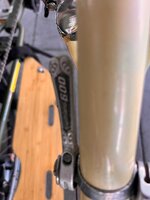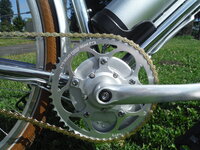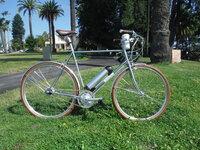Carl Sagan was far more than a science popularizer. He was a towering pioneer in planetary science. And he smoked marijuana every night after work. Not to get stoned, but not microdosing, either.
Sagan was a deep and wide-ranging thinker, and he spent a lot of time thinking about science, philosophy, and the social issues of the times in that state. Novel ways of looking at these things would often pop into his head. Many seemed promising at the moment, but how would they look the day?
Ever the consummate scientist, Sagan kept a log to find out. As I recall, about 80% of the ideas he thought worth writing down still looked pretty good the next day. And some led to significant advances in his work.
Spanish philosopher Jose Ortega y Gasset once said, "Everything in the world is strange and marvelous to well-open eyes." I find microdosing with edibles to be a very effective eye-opener with no impairment.
And when better to have well-open eyes than out in the world on a bike?
Back to Sagan. Images of our planets and moons and asteroids and other solar system denizens are pretty trippy by themselves. And the more you dig into these objects scientifically, the trippier they get. So many phenomena far removed from anything experienced or even contemplated here on Earth! "Expect the Unexpected" and "Might as Well Just Stay Outside the Box" could be planetary science poster slogans.
Easy to see how well-open eyes might have helped Sagan with this subject matter.
We are wandering so far off topic we'll need GPS to get back, but...
Informal, anecdotal accounts from my caseload suggest that small doses of
thoroughly tested, commercial products, particularly those intended for medical use do appear to cause far fewer unwanted effects, and much less intrusive perceptual distortions. Which makes sense: If you are ingesting five to seven chemicals instead of 250-500 chemicals, you will probably have a milder, more predictable experience. There is less of a 'head rush,' and the 'paranoia' experienced by smokers generally does not escalate beyond some transient agitation-- might be distracting and unpleasant, and my clients have said that if they can avoid stressful situations or trying to multi-task during that 10 to 40 minute window of time, it's pretty manageable in the 5-to-10 milligram range.
I just get fewer complaints from folks who use it that way-- fewer people bombing their exams, being late to work, getting 'crossed' w/ alcohol or other substances, making bad decisions, persistent underemployment or underachievement-- which are more prevalent in those who smoke. Completely unscientific, of course, not giving medical advice, consult your doctor, lawyer, shaman, or whatever, etc.
The main risks seem to be that the effect can be unpredictable in that range as well, though whether this is due to variability in the product (despite rigorous testing) or something about the bioavailability and erratic pharmacokinetics remains unknown. What I do hear is people saying, "I don't get it, I have 8mg every night at the same time of day, have the same diet, and most nights it's barely psychoactive-- maybe just some out-of-the-box thoughts, as Jeremy describes, and music sounds a little different-- but one night out of 20, it will be more like a mild acid trip: Not unpleasant, but more than I bargained for on a work night."
For biking, as a health care professional, I'd still always recommend nothing at all when operating any vehicle. That said, for biking or driving, the biggest risk is what I call the 'left turn problem,' or an increase in indecision, self-consciousness, and nervousness. "Can I make it or not? " is not a good feeling to have in any vehicle, and it's likely to be at its worst in that 10-40 minute window of agitation.
Should anyone have that happen to them? Get off the road and wait it out, even if it means missing the start of a movie or showing up to dinner late or not at all. Not worth the risk.



